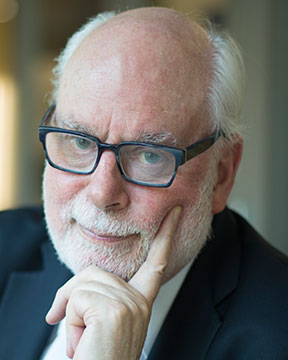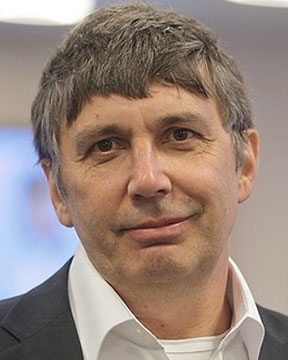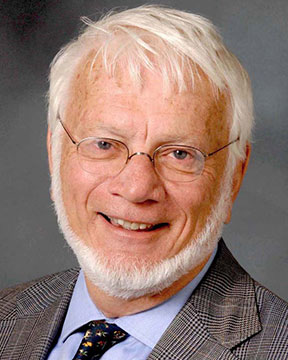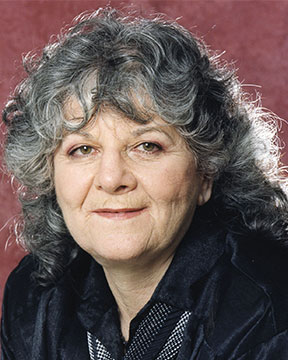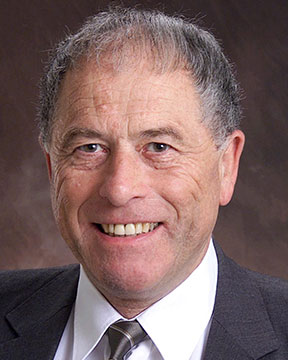ORALS
SESSION: SISAMWedPM1-R5
Functional Materials | Zehetbauer International Symposium on Science of Intelligent and Sustainable Advanced Materials (4th Intl. Symp. on Science of Intelligent and Sustainable Advanced Materials (SISAM)) |
| Wed Nov, 7 2018 / Room: Copacabana A (150/1st) | |
| Session Chairs: Ernst Bauer; Gerda Rogl; Session Monitor: TBA |
14:25: [SISAMWedPM106] Invited
Bulk and Thin-film Stoichiometric and Off-stoichiometric Full Heusler Thermoelectric Systems Ernst
Bauer1 ; Bernhard
Hinterleitner
1 ; Michael
Poneder
1 ; Christoph
Eisenmenger
1 ; Johannes
Rehak
1 ; Rene
Moser
1 ; Raimund
Podloucky
2 ; Takao
Mori
3 ; Xing-qiu
Chen
4 ;
1Technische Universität Wien, Vienna, Austria;
2Technische Universität Wien, Wien, Austria;
3NIMS Tsukuba, Tsukuba, Japan;
4NIMS Tsukuba, Shenyang, China;
Paper Id: 226
[Abstract] Among the various families of thermoelectric materials, half-Heusler and full-Heusler systems are appreciated for their excellent mechanical properties and an outstanding thermal stability. While half-Heusler materials are also known for their superior thermoelectric performance as characterized by the so-called figure of merit, ZT, reaching ZT values above 1, the thermoelectric efficiency of full-Heusler systems is still moderate and does not exceed ZT ~ 0.1 - 0.2. The latter finding is based on the unfavorable fact that the total thermal conductivity of such Heusler phases is pretty large, exceeding that of well-behaving thermoelectric materials by more than one order of magnitude. Nevertheless, the power factor of Heusler systems like those based on Fe<sub>2</sub>VA1, is comparable, or even exceeds that of well behaving and excellently performing materials based on Bi-Te.
In this contribution, the influence of substitution on different lattice sites (e.g., V/W or Fe/Ni) on the thermoelectric performance is studied, both from experiments as well as from first principles DFT calculations. In addition, we show that thin film preparation of Heusler systems results in an significant enhancement of the power factor pf substantial drop of the lattice thermal conductivity and thus in an dramatic increase of the figure of merit ZT. A number of microscopic observations are accounted for to explain this boost.
SESSION: SISAMWedPM1-R5
Functional Materials | Zehetbauer International Symposium on Science of Intelligent and Sustainable Advanced Materials (4th Intl. Symp. on Science of Intelligent and Sustainable Advanced Materials (SISAM)) |
| Wed Nov, 7 2018 / Room: Copacabana A (150/1st) | |
| Session Chairs: Ernst Bauer; Gerda Rogl; Session Monitor: TBA |
14:50: [SISAMWedPM107] Invited
Severe Plastic Deformation via High Pressure Torsion in Thermoelectrics Gerda
Rogl1 ;
Peter
Rogl2 ;
Ernst
Bauer3 ;
Michael J.
Zehetbauer4 ;
1Christian Doppler Laboratory for Thermoelectricity, Wien, Austria;
2University of Vienna, Faculty of Chemistry, Wien, Austria;
3Technische Universität Wien, Vienna, Austria;
4University of Vienna, Wien, Austria;
Paper Id: 188
[Abstract] Thermoelectric materials are able to directly convert thermal energy into electrical energy, and vice versa. The potential of a material for thermoelectric applications is determined by the dimensionless figure of merit, ZT, which is directly proportional to the Seebeck coefficient squared and the temperature, and inversely proportional to the electrical resistivity and thermal conductivity, the latter consisting of an electronic and phonon part. As the Seebeck coefficient, the resistivity and electronic part of the thermal conductivity, are interdependent, one way to enhance ZT is to reduce the phonon part by enhancing the scattering of the heat carrying phonons.
High pressure torsion (HPT) is known as an outstanding technique in the methods of severe plastic deformation (SPD) to produce bulk ultra fine grained and nano crystalline materials, by introducing many grain boundaries as well as defects like dislocations and point defects [1,2,3].
In the first step, HPT-mediated nano crystallization was used to reduce the thermal conductivity of ball milled (BM) and hot pressed (HP) skutterudites. The samples, which were HPT processed after BM and HP, show enhanced ZT values up to a factor of 2 in comparison to BM and HP samples.
In the second step, HPT at elevated temperatures and in argon atmosphere was used to directly consolidate skutterudite powders into a solid. This way, time and energy consuming BM and HP can be avoided [4,5].
In this paper, we compare the grain sizes as well as dislocation densities and structural, physical, and mechanical properties of BM + HP samples with BM + HP + HPT samples, along with HPT produced samples (synchrotron diffraction data, collected from 300 - 800 K, SEM and TEM investigations reveal the modifications).
References:
[1] M.J. Zehetbauer, Y.T. Zhu (eds), Modeling of Strength and Strain Hardening of Bulk Nanostructured Materials in: Bulk nanostructured materials, Wiley VCH, Weinheim (2009).
[2] M. Zehetbauer, H.P. Stuewe, A. Vorhauer, E. Schafler, J. Kohut, Adv. Eng. Mater. 5 (2003) 33.
[3] T. Ungar, M. Zehetbauer, Scr. Mater. 35 (1996) 1467.
[4] G. Rogl, P. Rogl, E. Bauer, M. Zehetbauer, Severe plastic deformation, a tool to enhance thermoelectric performance, in: Thermoelectric Nanomaterials, K. Kuomoto, T. Mori (eds), Springer Series in Materials Science 182, Springer Verlag Berlin (2013).
[5] G. Rogl, A. Grytsiv, J. Bursik, J. Horky, R. Anbalagan, E. Bauer, R.C. Mallik, P. Rogl, M. Zehetbauer, Phys. Chem. Chem. Phys. 17 (2015) 3715.



